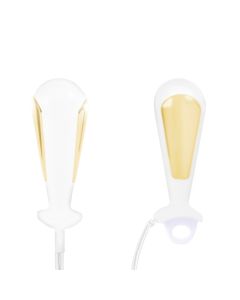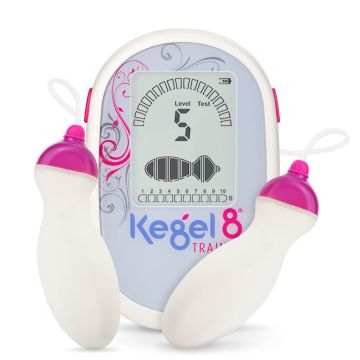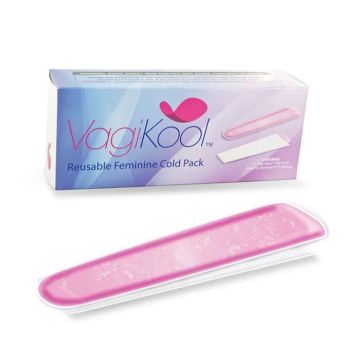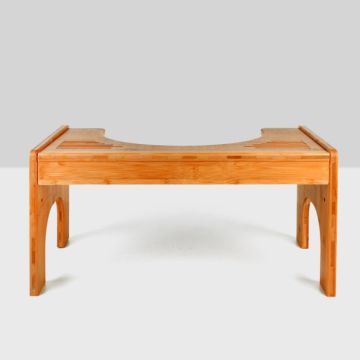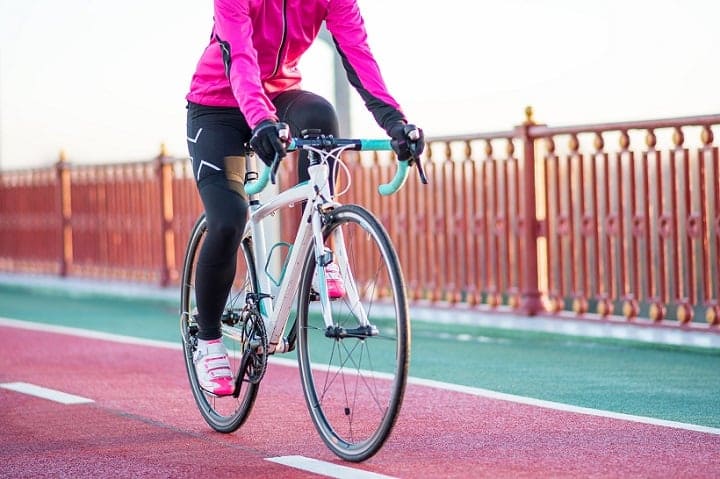
Cycling is a great activity to stay fit and healthy. However, it comes at a price. Cycling is not the kindest sport to your vulva and vagina – potentially taking a toll on your pelvic floor.
Why is the pelvic floor important in cycling?
Cycling can be a thrilling sport and a wonderful form of exercise. A key component that is often overlooked in cycling, however, is the role of the pelvic floor. Not only does a robust pelvic floor contribute to enhanced core strength and efficient breathing, it also plays a vital role in ensuring comfort and safety during rides. Yet, cycling, especially without the proper precautions, can place undue strain on the pelvic floor.
For those serious about cycling, the proper fit of your bike is paramount. The seat's design and the handlebars' positioning can heavily influence the pressure exerted on the pelvic region. If not appropriately adjusted, they can become major culprits in causing pelvic floor issues among female cyclists.
How does cycling affect the female pelvic floor?
Both the handlebar and the seat of your bike can cause genital injuries. A few genital and pelvic floor symptoms that can develop through cycling are:
- Pain
- Tenderness
- Neuropathy
- Urological dysfunctions
- Skin lesions
- Genital numbness
- Vulval trauma
In one study, up to 91% of cyclists reported decreased genital sensation.
The bicycle seat
The shape and design of your bicycle seat can affect a female cyclist’s genitals and pelvic floor.
Cut-out seats place extra pressure on the perineum (the area between the anus and the vulva) compared to broader, more traditional shaped seats that are associated with fewer genital or pelvic floor disorder symptoms.
The handlebar
Do you lower your handlebar when cycling? Well, we’ve got bad news. Despite a lower handlebar position being advantageous in terms of wind resistance and speed, it can also present detrimental effects to the pelvic floor. Not only that, but women who ride their bicycle in this drop position can experience greater pelvic tilt than men, causing their pelvic floor muscles to tighten.
If the pelvic floor muscles become too tight, your nerves and arteries can become compressed, causing the muscles that surround them to contract and not relax properly. An overactive pelvic floor can lead to pelvic pain and increase the frequency of urinary tract infections (UTIs).
If your pelvic floor is already weak, you may experience urge incontinence when you cycle.
1 in 3 women reported symptoms of pelvic floor disorders. The most common conditions include:
It's not just women who suffer either! Men can experience genital numbness and even experience urinary incontinence when cycling!
How to protect your pelvic floor when cycling
The best way to avoid developing a pelvic floor disorder when cycling is to alter the way you cycle. The best things that you can practice to avoid genital numbness or pelvic floor injuries are:
- Practice pelvic floor muscle exercise AND relaxation – it’s just as important to learn how to relax your pelvic floor muscles
- Invest in a larger seat to reduce pressure on your perineum
- Try riding out of the saddle for a few minutes to relieve pressure on the genital area and restore blood flow
- Heighten your handlebars to decrease the risk of losing genital sensation
Sources
[1] Connell, K. (2013) Cycling and Pelvic Health: Learn to Protect Yourself [online]. Urogynecology: University of Colorado [viewed 08/08/2018]. Available from: https://urogyn.coloradowomenshealth.com/blog/cycling-womens-pelvic-health.
[2] Frobose I, Baeyens L, Tofaute K. (2003) Ergonomics of 2 bicycle saddles—pressure at the pudendal area in women of a normal saddle with gel and of a saddle with a hole. The Bicycle Saddle Report.
[3] Guess, MK., et al. (2006) Genital Sensation and Sexual Function in Women Bicyclists and Runners: Are Your Feet Safer Than Your Seat? Journal of Sexual Medicine. 3(6), pp. 1018-1027.
[4] Guess, MK., et al. (2011) Women’s Bike Seats: A Pressing Matter for Competitive Female Cyclists. Journal of Sexual Medicine. 8(11), pp. 3144-3153.
[5] Humphries D. (2002) Unilateral Vulval Hypertrophy in Competitive Female Cyclists. British Journal of Sports Medicine. 36(6), pp. 463–464.
[6] Kim, GS., Kim, EG., Shin, KY., Choo, HJ., Kim, MJ. (2015) Combined Pelvic Muscle Exercise and Yoga Program for Urinary Incontinence in Middle-Aged Women. Japan Journal of Nursing Science. 12(4), pp. 330-339.
[7] Leibovitch, I., Mor, Y. (2005) The Vicious Cycling: Bicycling Related Urogenital Disorders. European Urology. 47(3), pp. 277-286.
[8] Mellion, MB. (1991) Common Cycling Injuries: Management and Prevention. Sports Medicine. 11(1), pp. 52-70.
[9] Navot, S., Kalichman, L. (2016) Hip and Groin Pain in a Cyclist Resolved after Performing a Pelvic Floor Fascial Mobilization. Journal of Bodywork and Movement Therapies. 20(3), pp. 604-609.
[10] Partin, S. et al (2012) The Bar Sinister: Does Handlebar Level Damage the Pelvic Floor in Female Cyclists?. Journal of Sexual Medicine. 9(5), pp. 1367-1373.
[11] Pastore, EA., Katzman, WB. (2012) Recognizing Myofascial Pelvic Pain in the Female Patient with Chronic Pelvic Pain. Journal of Obstetric, Gynecologic, and Neonatal Nursing. 41(5), pp. 680-691.
[12] Sauer, JL., et al. (2007) Biodynamics: Influence of Gender, Power, and Hand Position on Pelvic Motion during Seated Cycling. Medicine and Science in Sports and Exercise. 39(12), pp. 2204-2211.
[13] Somer, F., et al (2001) Impotence and Genital Numbness in Cyclist. International Journal of Sports Medicine. 22(6), pp. 410-413.
[14] Trofaier, ML., et al. (2016) Pelvic Floor Symptoms in Female Cyclists and Possible Remedies: A Narrative Review. International Urogynecology Journal. 27(4), pp. 513-519.
[15] Yi, J., Tenfelde, S., Tell, D., Brincat, C., and Fitzgerald, C. (2016) Triathlete Risk of Pelvic Floor Disorders, Pelvic Girdle Pain, and Female Athlete Triad. Female Pelvic Medicine and Reconstructive Surgery. 22(5), pp. 373-376.




